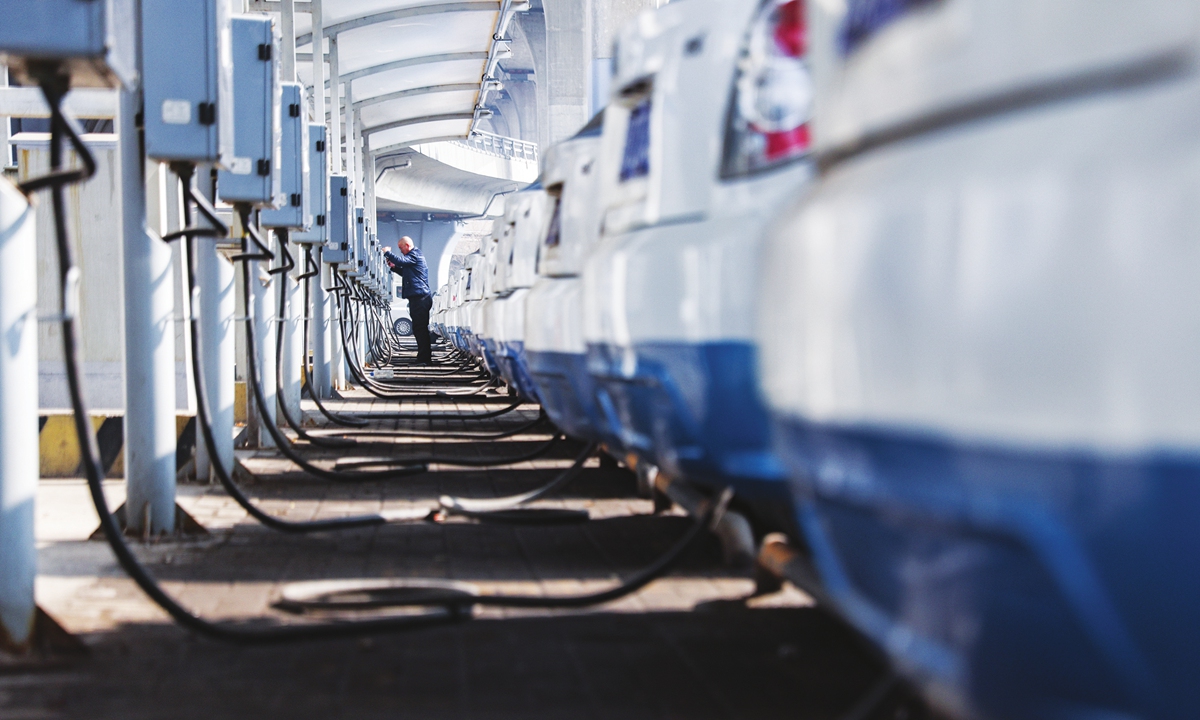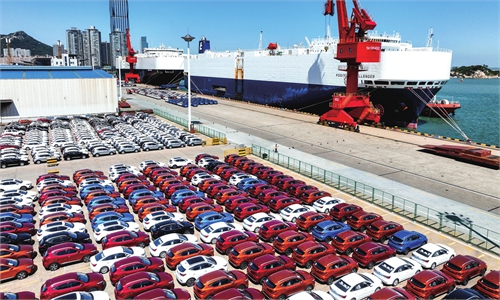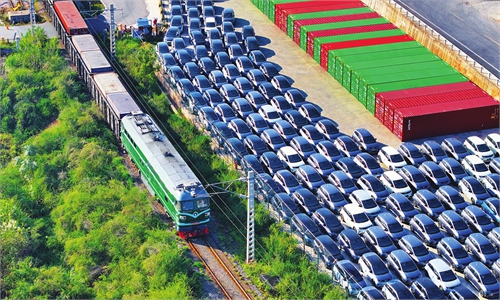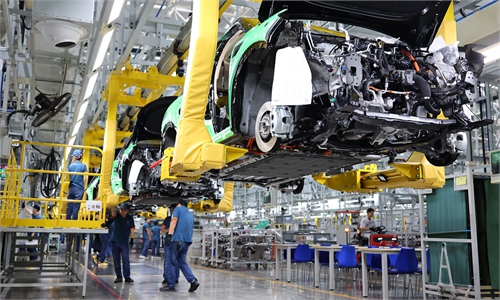
An NEV charging station in Taiyuan, North China’s Shanxi Province File Photo: VCG
China is set to promote the charging of new-energy vehicles (NEVs) during off-peak power usage by strengthening the interaction between NEVs and the power grids, with a relevant technical standard system established by 2025 and completed by 2030, several Chinese ministries jointly announced on Thursday.
By 2030, the interaction between China's NEVs and the power grid is expected to achieve large-scale application, facilitating the comprehensive promotion of intelligent and orderly NEV charging. The NEV-power grid interaction involves energy and information exchange through charging and discharging devices, enabling NEVs to participate in scenarios like virtual power plants.
According to an implementation suggestion released by four Chinese ministries, connecting NEVs to the power supply network can effectively leverage the flexible adjustment ability of vehicle power batteries as mobile energy storage.
Analysts highlight the significance of this suggestion, supporting the large-scale development of the NEV industry, the construction of new energy systems, and new power systems.
The suggestion sets a target that, by 2025, more than 80 percent of NEV power charged with private charging piles should be during off-peak power usage, with over 60 percent of NEV power charged in the off-peak period for the entire society in pilot cities.
Large-scale pilot demonstrations of NEV-power grid interaction are planned in regions such as the Yangtze River Delta, Pearl River Delta, Beijing-Tianjin-Hebei-Shandong region, Sichuan-Chongqing region, and other areas with favorable environments. Ministries aim to build more than five demonstration cities and over 50 two-way charging and discharging demonstration projects by the end of 2025.

Many domestically produced cars are assembled at Yantai Port ready to be loaded for export in Yantai, East China’s Shandong Province on December 5, 2023. The China Association of Automobile Manufacturers said that from January to October, China’s exports of new-energy vehicles amounted to as high as 995,000 units, a year-on-year increase of 99.1 percent. Photo: VCG
In addition to the goal of charging NEVs during off-peak periods, the suggestion outlines six major tasks, including technological breakthroughs to extend battery lifetime and improvements in the market mechanism of electricity prices.
Furthermore, the suggestion encourages power suppliers to engage in the construction and servicing of charging facilities in residential areas. Power suppliers are also urged to build terminals integrating solar power generation, storage, and charging facilities based on local conditions, promoting the integrated development of transportation and energy generation.



